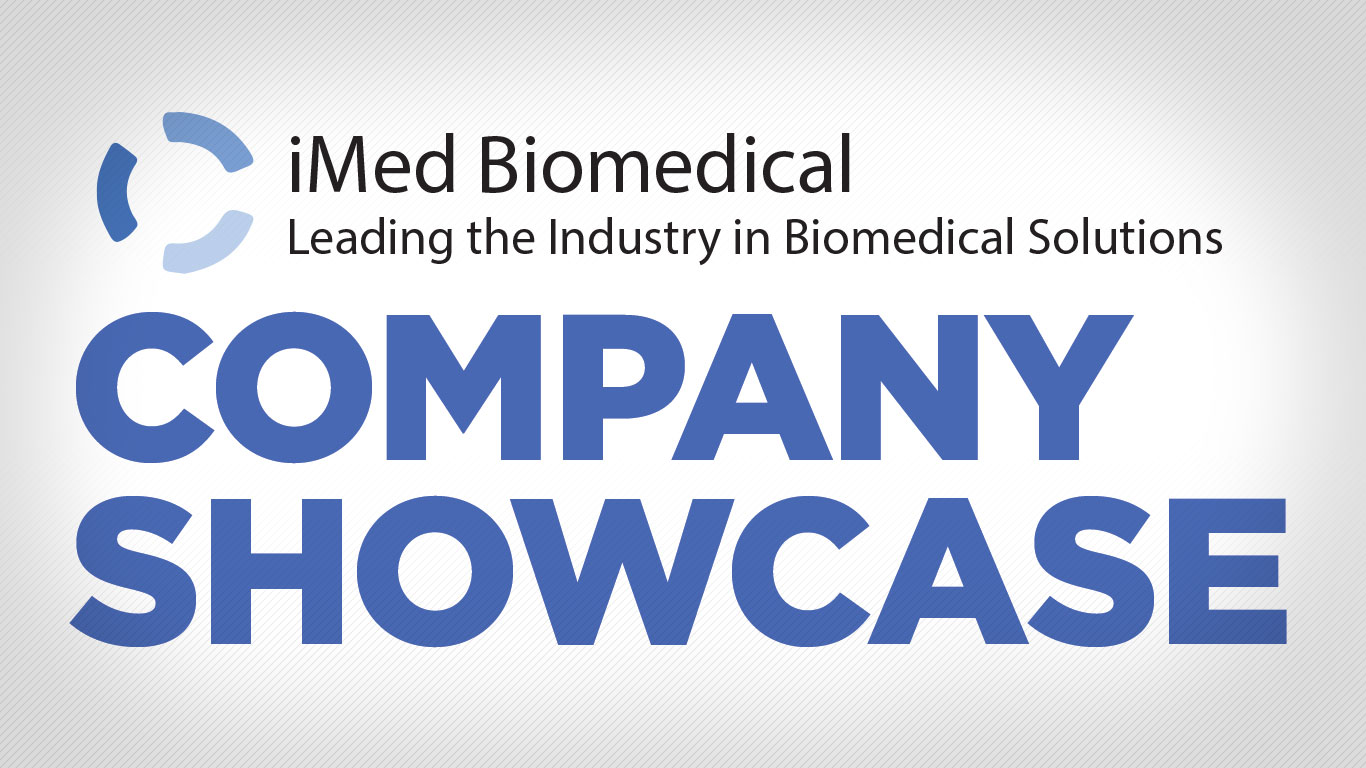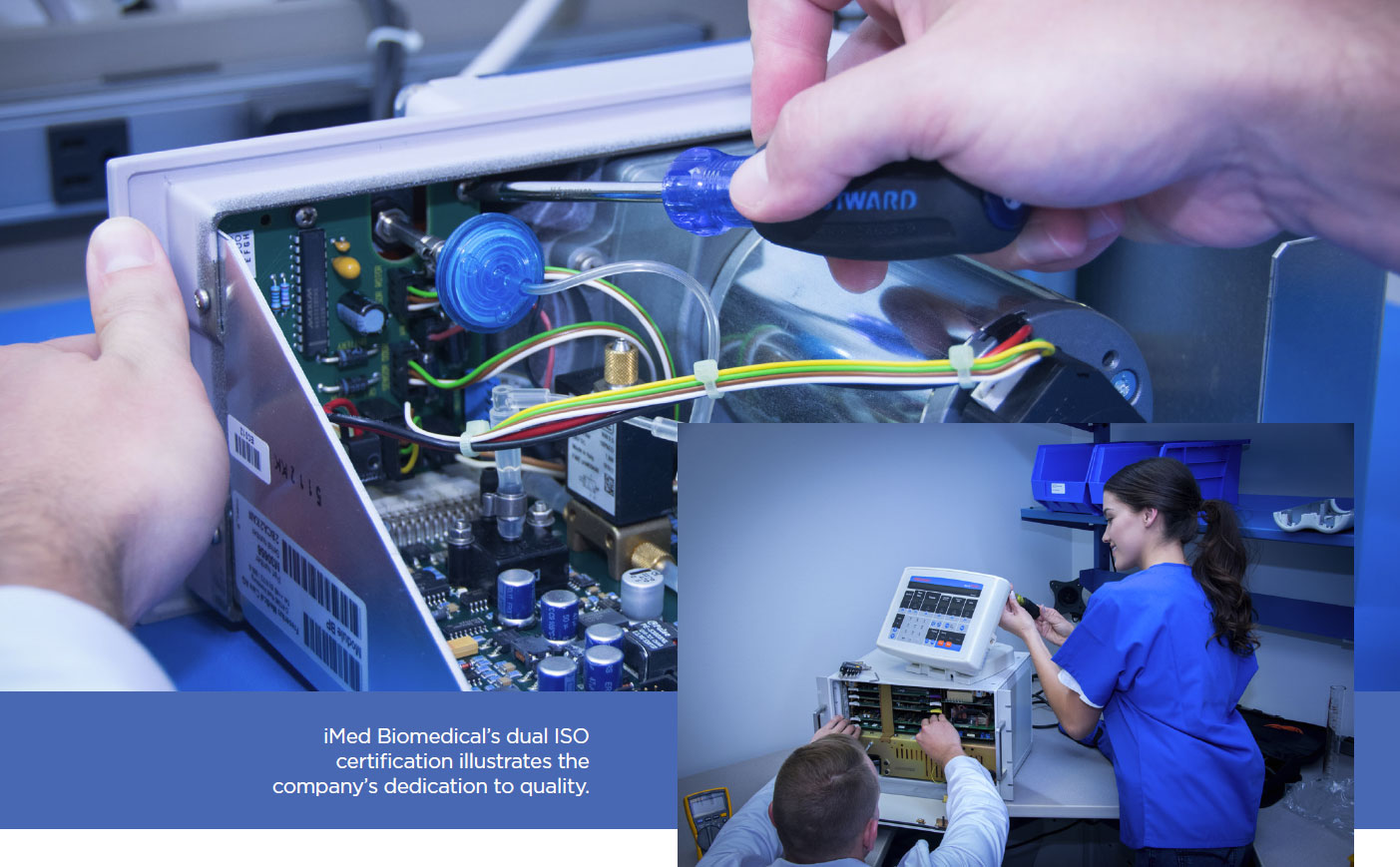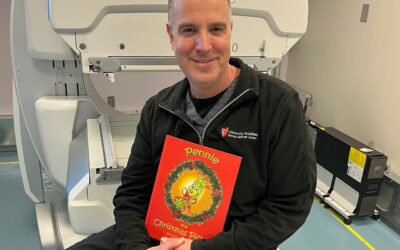
 iMed Biomedical Inc. (iMed) in May of this year announced its ISO 9001:2015 and 13485:2016 certifications. As part of the ISO certification process, iMed engaged in a rigorous audit of its product and service quality requirements.
iMed Biomedical Inc. (iMed) in May of this year announced its ISO 9001:2015 and 13485:2016 certifications. As part of the ISO certification process, iMed engaged in a rigorous audit of its product and service quality requirements.
The FDA has conducted market research on third-party service organizations in the equipment repair industry and concluded that there is not enough information to determine if non-OEM organizations would negatively or positively impact patient safety or quality of care. Lastly, the FDA recommended that third-party service companies obtain an ISO certification to improve consistency of services and reduce liability. Becoming dual certified, showcases iMed’s dedication to the quality of the services and products it provides.
“We continue implementing the ISO standard and keep looking for ways to improve. As a team, we will constantly look for opportunities to build and support the industry with products that are dependable yet coupled with innovation and creativity,” a press release from iMed states.
ICE magazine recently interviewed iMed Biomedical Inc. Director of Operations Russender Powell to find out more about the company.
Q: Can you share a little bit about your company’s history and how you achieved success.
Powell: iMed Biomedical Inc. is leading the industry in biomedical solutions. Our company has a rich history while uniquely positioned as a market innovator by providing highly customized mission critical technology to both supply-side health facilities and demand-side medical supply distributors. While I am very proud of our heritage, I am more excited about our future. iMed Biomedical Inc. was built on the foundation of four guiding principles. Our guiding principles are designed to reflect our culture, values and beliefs. I am personally committed to uphold our principles in decisions that help shape our strategy, growth and success.
Q: What are iMed Biomedical’s four guiding principles?
Powell: Our guiding principles are affectionately called the 4Ps. Our four guiding principles are as follows:
- People
Our goal is to hire, retain and reward talented, dedicated and intellectually curious people. Our people are the differentiator that distinguishes our company from the competition. - Product
Build and support industry leading products and services – our products must be dependable yet coupled with innovation and creativity. - Purpose
Develop an environment in which employees, customers and vendors feel connected to each other and our business. By giving of ourselves to others our lives will be enriched. - Profits
As a result of delivering great products, produced and supported by great people that possess a sense of purpose, our customers will increase their profits. As a result of our customer’s success, we will increase our profits.
Q: Can you tell our readers more about the ISO certifications?
Powell: We obtained both ISO 9001:2015 and ISO 13485:2016. The primary difference between ISO 13485 and ISO 9001 for medical devices is the scope of these quality standards. ISO 9001 is the international standard which provides specifications for a quality management system which can be applied at any organization regardless of industry, product or service, or company size. ISO 13485 is a comprehensive management system specifically for the manufacture of medical devices.

Q: Why did iMed want to earn the ISO certifications?
Powell: We obtained both certifications because we wanted to mirror the same standard and requirements that the OEM must meet to gain FDA clearance. Our certification is a testament to the care and diligence that we deliver to our customers daily in providing the best service possible.
Q: Can you briefly explain the ISO process?
Powell: There is nothing brief about the ISO process. To start the ISO process, you must create a Quality Management System (QMS) that includes your policies, processes and procedures to execute a core function of the business. Your management team will assign process owners for each core function of the QMS and monitor performance goals and execution. Each process owner will document non-conformance, maintain risk management records, and provide feedback to the team, which will guide toward continual improvement. Once you feel like you have established processes and procedures and data to show that your QMS is effective, reach out to a certified auditing firm to establish your audit plan and timeline.
Q: Can you describe the ISO process for refurbishing imaging parts?
Answer: For parts that have been identified as having a high failure rate, we have work instructions that detail the steps to begin the repair and testing of each component of the unit. Once the appropriate tests are completed, qualifying parts are moved to the process of refurbishing. The refurbishing process begins with component and subcomponent checks; replacement of worn parts with original spare parts, software updates with optional upgrades, individual configuration, and performance check comparable to a new system. Then, move to cleaning and disinfection.
Q: What did iMed learn during the process to help it better serve customers?
Answer: We learned how to integrate a strategic review of customer feedback as well as our performance into our continual improvement plan. Also, there has been a move to better methods developed to obtain customer feedback from surveys and questionnaires. Risk assessment and terms agreement procedures to that have reduced customer complaints. Also, we have been able to provide service that is more prescriptive to our customer’s needs.



![[Sponsored] Company Showcase: iMed Biomedical](https://theicecommunity.com/wp-content/uploads/2020/08/imed-showcase-1080x675.jpg)




